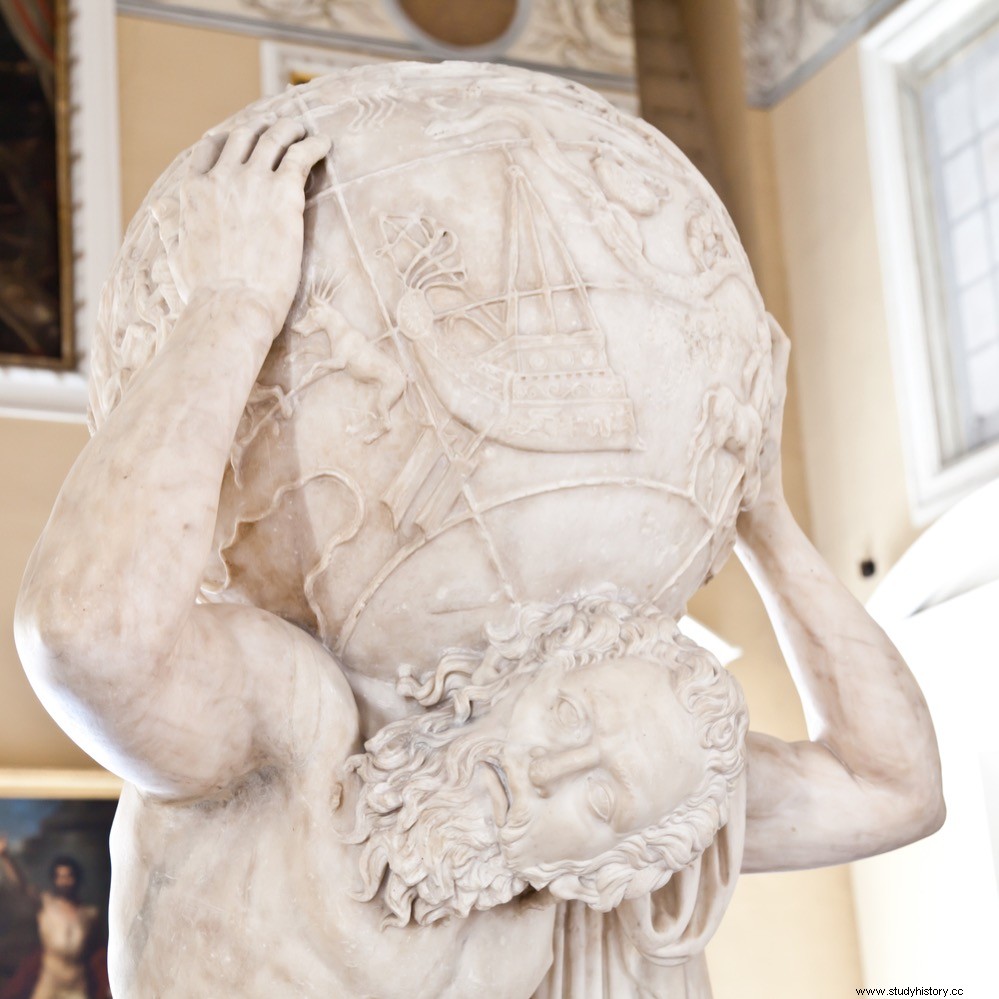Atlas or Atlante was one of the titans of Greek mythology, son of Iapetus and the oceanic Climene, and brother of Prometheus. After the war against the Olympian gods, Zeus condemned him to hold the vault of heaven (or celestial sphere) on his shoulders for all eternity.
Herodotus claimed that Atlante was a mountain in Libya, in North Africa:

And Diodorus Siculus that Atlas had been a legendary king of Mauritania, mathematician and astronomer, who had discovered the sphericity of the stars and built the first celestial sphere. For this reason he would have ended up being deified in the mythological figure of Atlante.

Mercator would pay homage to this legendary Libyan king by naming his map book Atlas, Sive Cosmographicae Meditationes De Fabrica Mundi , published in 1595 after his death, and which gives its name to our modern atlases.
Of all the sculptural representations of the mythological titan Atlas that were made in the Greco-Roman era, the oldest that has survived is the Farnese Atlas . It is a Roman copy of a lost Hellenistic original, made in the 2nd century AD. (around the year 150) and that today is kept in the Archaeological Museum of Naples.
The statue is 2.1 meters tall, and the sphere that supports the titan is 65 centimeters in diameter. Apart from being the oldest sculpture of Atlas found to date, the work is important because it shows us the first known representation of the celestial sphere .
It depicts the night sky as it would be seen from inside the dial, with reliefs of 41 of the 48 classical constellations listed by Ptolemy in the 1st century AD, including Aries, Cygnus, and Hercules.

What is depicted on the dial, which the Roman sculptor copied with errors from the Greek original, is believed to be inspired by a previously written catalogue. In this sense, Professor Bradley E. Schaefer, from the University of Louisiana, believes that the model followed is the Catalogue of stars compiled by Hipparchus of Nicaea in 129 BC
Hipparchus' catalog contained the position and elliptical coordinates of 850 stars in 48 constellations. Comparing it with the first known in the Western world, the one made by Timochares of Alexandria about 150 years earlier, Hipparchus realized that the position of the stars had changed, which led him to the discovery of the precession of the equinoxes, that is, that is, the change in the orientation of the Earth's axis of rotation.
No copy of Hipparchus's catalog survives, only descriptions of it in his work Comments , so the value of the Farnese Atlas in the sense that it shows us that catalog is incalculable.
